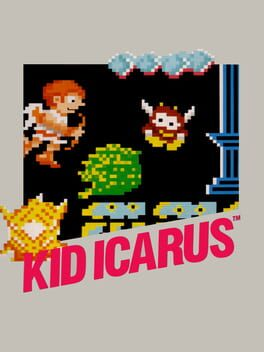▲
1
▼
There is a hidden feature that allows Pit to haggle with Shopkeepers to lower the prices of items.
In the NES release, this is done by simultaneously pressing A and B on a second controller. In the Famicom release, haggling is instead done using a second controller with a microphone on it, by holding A on the second controller and speaking into the microphone to haggle. In the 3D Classics port for the 3DS, haggling can be done by simultaneously pressing the A button and either Start or Select.
The main catch to haggling is that the prices will only be successfully lowered if Pit's health is one point higher than the first number of the stage he is currently haggling on (i.e. Pit's health must be at 2 arrows when haggling in World 1 to successfully haggle). Otherwise, the Shopkeeper will raise the prices instead.
However if you fail to haggle, the prices will not change until the Shopkeeper's text finishes scrolling, creating a small window of time to buy something at its original price just before they increase.
In the NES release, this is done by simultaneously pressing A and B on a second controller. In the Famicom release, haggling is instead done using a second controller with a microphone on it, by holding A on the second controller and speaking into the microphone to haggle. In the 3D Classics port for the 3DS, haggling can be done by simultaneously pressing the A button and either Start or Select.
The main catch to haggling is that the prices will only be successfully lowered if Pit's health is one point higher than the first number of the stage he is currently haggling on (i.e. Pit's health must be at 2 arrows when haggling in World 1 to successfully haggle). Otherwise, the Shopkeeper will raise the prices instead.
However if you fail to haggle, the prices will not change until the Shopkeeper's text finishes scrolling, creating a small window of time to buy something at its original price just before they increase.
Haggling in the Famicom version:
https://www.youtube.com/watch?v=aF_TynJ-c6w
Haggling in the 3D Classics port:
https://youtu.be/-pVgHw0Hixw?t=300
https://www.youtube.com/watch?v=aF_TynJ-c6w
Haggling in the 3D Classics port:
https://youtu.be/-pVgHw0Hixw?t=300
▲
1
▼
The enemy 'Komayto' is a reference to the Metroids in Metroid, a game that uses the same engine as Kid Icarus, and was released on the same day. As well as having the same appearance, the name comes from Kometo, short for Kometoroido, which means 'Metroid Child' in Japanese.
This trivia has been marked as "Not Safe for Work".
It may not be appropriate for all visitors and definitely isn't appropriate for work or school environments.
Click here to unhide it.
It may not be appropriate for all visitors and definitely isn't appropriate for work or school environments.
Click here to unhide it.
▲
1
▼
▲
1
▼
The majority of Kid Icarus was developed during three months of intense work, where developers would stay up all night, and sleep in the office. They created make-shift beds using cardboard boxes and curtains, and would endure hours of winter cold in the unheated building.
Related Games
Kid Icarus: Of Myths and Monsters
Kid Icarus
Kid Icarus: Uprising
Super Smash Bros. for Nintendo 3DS
Super Smash Bros. for Wii U
NES Remix 2
Super Smash Bros. Ultimate
Ultimate NES Remix
Nintendo World Championships: NES Edition
Super Smash Bros. Brawl
Donkey Kong
Metroid: Zero Mission
Super Mario Advance 4: Super Mario Bros. 3
Rhythm Heaven Fever
DK Bongo Blast
Fire Emblem: The Binding Blade
New Play Control! Pikmin
Tetris & Dr. Mario
Donkey Kong Country: Tropical Freeze
Donkey Kong Plus
Banjo-Kazooie: Grunty's Curse
Wario Land 4
Eternal Darkness: Sanity's Requiem
Rayman Legends
Final Fantasy I & II: Dawn of Souls
Dragon Ball Z: Super Butouden
Rhythm Tengoku
Mario Bros.
Mario Kart Arcade GP DX
Hyrule Warriors: Legends
Paper Mario
Mario Party DS
Metroid II: Return of Samus DX
Donkey Kong Barrel Blast
Fire Emblem: Radiant Dawn
WarioWare Gold
Star Fox Wii
Mario & Luigi: Superstar Saga + Bowser's Minions
Pokémon Legends: Arceus
Animal Crossing: City Folk
Super Mario Galaxy
Pokémon Omega Ruby
Fire Emblem: Ankoku no Miko
Kirby's Star Stacker
Super Mario 3D World + Bowser's Fury
Yoshi's New Island
Mario Bros. Classic Serie
Crystalis
Metroid: Other M
Super Mario 3D All-Stars

